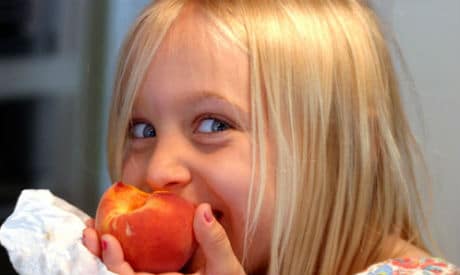
If your child has ADHD, foods that MUST be avoided include:
– processed, fried, prepared and fast foods.
– preservatives, artificial colors, artificial flavors, MSG- this includes luncheon meats, most hot dogs, margarine, candy, ketchup, soda pop, instant noodles, popsicles, packaged foods, etc.
-anything with nutrasweet or aspartame – check all “sugar free” products for these ingredients.
-highly processed carbohydrates – AVOID ALL WHITE STUFF! This includes white flours, sugar, rice, bread, pasta.
Optimize Nutrition!
1. Start your child’s day with a high protein, low carbohydrate breakfast. This can make an enormous difference in an ADHD child’s ability to focus during the day. A good breakfast sets the pace for the body’s metabolism throughout the day, impacting energy, self-control, and attention.
2. Pack your child’s school lunch, with his/her help. Discuss the nutritional value of what goes in, look for a range of colors in fruit and vegetables, and get creative. Think beyond sandwiches to soups and stews sent in a thermos, wraps in tortilla shells or even lettuce leaves, stuffed eggs, protein shakes or smoothies, or, last night’s leftovers.
3. Snacks: put out cut fresh vegetables, nuts, raisins, sliced fruits, cheese, peas in the pod, edamame to nibble while doing homework. Bake on weekends – make muffins, granola bars, cookies using whole grains and natural sweeteners like agave and coconut sugar. Make sprouts- they have great nutrition value, and are fun to grow.
4. An ideal dinner plate is one that has a palm size piece of protein (preferably grass fed, organically raised meat or chicken, or non farmed fish); a palm size portion of non-white grains; and an assortment of vegetables and fruits. The larger the range of colors on your plate, the larger the range of healthy phytochemicals.
5. All carbohydrates must be complex and limited in how much they have been processed. The more processed the grain, the higher it is on the glycemic index, the less nutrition value.
6. Eat 12-15 portions of fresh fruits and vegetables daily. A “portion” may be an apple snack, a few cut carrots, a handful of raisins, a ¼ cup of peas with dinner, etc.
7. Sneak vegetables into foods, for example: finely chopped sautéed greens in pasta sauce; pureed squash in mac and cheese; chopped celery and cukes in tuna or chicken salad; carrot juice or powdered greens in smoothies
8. Eat organic food whenever possible. Nutrient values aside, organic foods are free of pesticides, sewer sludge, antibiotics, and growth hormones – these are neurotoxic and especially dangerous for young children’s brains. The level of pesticide in children’s bodies is less when they eat organic food. The incidents of ADHD is 2-3 times higher in children with detectable blood and urine concentrations of herbicides and pesticides used in conventional farming. (If you cannot afford to go fully organic – make sure all dairy products, eggs, meat and chicken are grass-fed organic.)
You will find that good nutrition, using unprocessed whole foods will make your entire family feel better and your ADHD child perform better.
Missed the intro to this article? Read it here
Beth Landau-Halpern is a homeopath with a special interest in treating children with ADHD and Autism. She has recently been certified as a CEASE therapist – an affective homeopathic approach to treating autism. For more information, visit Beth at her websites: http://blh-homeopath.com and http://adhdhomeopath.com.
Photo credit: Bruce Tuten










